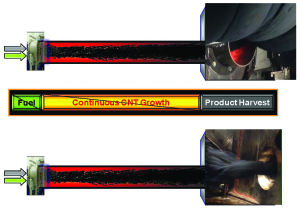
Breaking News
Living a Creative Life Maximizes Your Life
SEMI-NEWS/SEMI-SATIRE: November 9, 2025 Edition
 Trump pardons Mets legend, 'Celebrity Apprentice' alum Darryl Strawberry over tax evasion co
Trump pardons Mets legend, 'Celebrity Apprentice' alum Darryl Strawberry over tax evasion co
 You WON'T BELIEVE How Much Money We're REALLY Sending To Israel!
You WON'T BELIEVE How Much Money We're REALLY Sending To Israel!
Top Tech News
 HUGE 32kWh LiFePO4 DIY Battery w/ 628Ah Cells! 90 Minute Build
HUGE 32kWh LiFePO4 DIY Battery w/ 628Ah Cells! 90 Minute Build
 What Has Bitcoin Become 17 Years After Satoshi Nakamoto Published The Whitepaper?
What Has Bitcoin Become 17 Years After Satoshi Nakamoto Published The Whitepaper?
 Japan just injected artificial blood into a human. No blood type needed. No refrigeration.
Japan just injected artificial blood into a human. No blood type needed. No refrigeration.
 The 6 Best LLM Tools To Run Models Locally
The 6 Best LLM Tools To Run Models Locally
 Testing My First Sodium-Ion Solar Battery
Testing My First Sodium-Ion Solar Battery
 A man once paralyzed from the waist down now stands on his own, not with machines or wires,...
A man once paralyzed from the waist down now stands on his own, not with machines or wires,...
 Review: Thumb-sized thermal camera turns your phone into a smart tool
Review: Thumb-sized thermal camera turns your phone into a smart tool
 Army To Bring Nuclear Microreactors To Its Bases By 2028
Army To Bring Nuclear Microreactors To Its Bases By 2028
 Nissan Says It's On Track For Solid-State Batteries That Double EV Range By 2028
Nissan Says It's On Track For Solid-State Batteries That Double EV Range By 2028
Nanocomp Technologies makes bulk carbon nanotubes 100 times longer at 1-10 ....

"Despite attractive mechanical and electrical properties, CNTs have largely been a disappointment for 'real-world' applications, because it has not been possible to make them in formats that are useful for engineers," explains Peter Antoinette, co-founder and president of Nanocomp Technologies Inc. (Merrimack, N.H.; www.nanocomptech.com), the developer of the process. Short CNTs do not readily form networks within other materials, unless used at very high concentrations.
The Nanocomp process revolves around a proprietary 1-m long heated reactor (photo) that contains a widely available iron catalyst and allows control of 23 separate process variables. Organic alcohols serve as the carbon source for CNTs. "By exerting tight control over the process conditions, we can manipulate the length and dimensions of the CNTs," Antoinette says. The longer, polymer-like CNTs resulting from the process are commercially available as Miralon products, and they can be spun into "yarn" using equipment for textile fiber processing. Because of their length, the Nanocomp CNTs form bundles and networks that allow them to be more useful in macroscale materials, such as for lightweight structural materials.

 Carbon based computers that run on iron
Carbon based computers that run on iron

